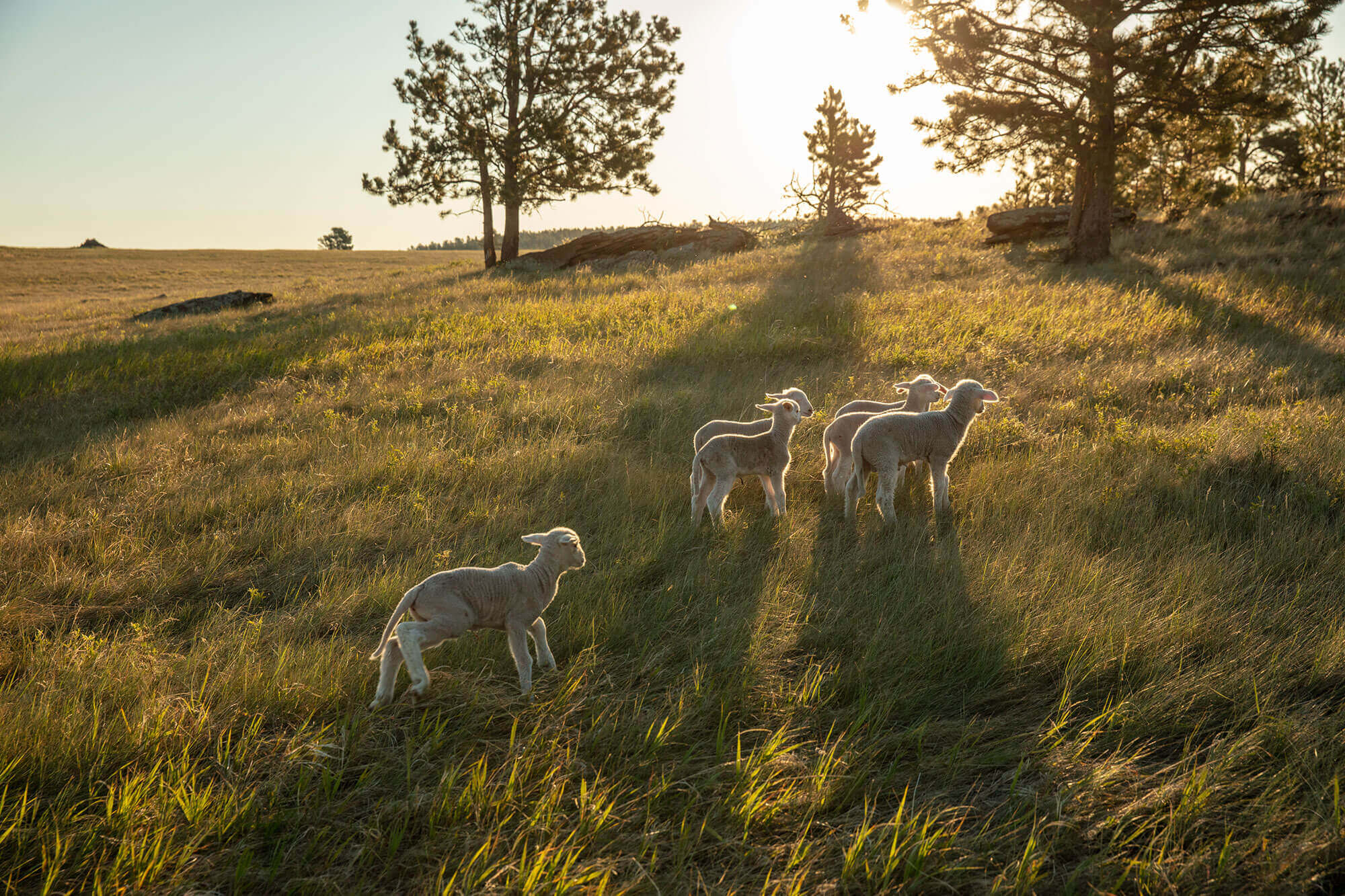We work to align with landowners on shared management goals that benefit prairie conservation.
Through Wild Sky partnerships, economic incentives are provided for wildlife tolerance. Landowners agree to voluntarily enroll their private lands in a selection of land management practices that benefit wildlife and habitat, and direct payments are offered in return. Landowners enter into a Wild Sky partnership through the Cameras for Conservation or Wildlife Friendly Lands programs.
Cameras for Conservation
The Cameras for Conservation program aims to increase the tolerance for wildlife on private lands by providing direct payment to landowners for specific species captured by trail cameras on their properties. American Prairie staff work with landowners to deploy trail cameras on areas of their enrolled private property frequented by wildlife. Each species is assigned a value amount and one enrolled property stands to earn up to $6,000 a year of incentive payments based on the wildlife presence. Payments for species range from $25 for each image of a coyote to $500 for a wolf or grizzly bear. This program provides a way for landowners to receive “rent” for wildlife that utilize the habitat on their property with the goal that these species are viewed as economic assets.
Wildlife Friendly Lands
The Wildlife Friendly Lands program provides monetary incentives for land management practices that have the most direct impact on wildlife occupancy and abundance on the land enrolled. This program is eligible to those who own or otherwise have control of the land they are enrolling.
Landowners can choose up to five categories to enroll in: Herbivore Abundance, Carnivore Compatibility, Landscape Connectivity, Species of Concern, and landowner specific projects. Landowners are paid based on the acreage of their deeded property. Aside from fencing projects, each category pays $0.75 per acre, per category, with total payments not exceeding $15,000. Fencing removal and wildlife friendly modifications are paid on a per mile basis.
Land management categories:
- Herbivore Abundance — Enrolled landowners agree to not take action that would significantly reduce or alter the abundance of grazing mammals.
- Carnivore Compatibility — Enrolled landowners prioritize non-lethal deterrents, with the goal of facilitating coexistence with carnivores.
- Species of Concern — Enrolled landowners agree to not take action that would threaten or endanger a species of concern (e.g., prairie dogs, sage grouse, swift fox, black-footed ferrets, beavers).
- Landowner Specific — American Prairie will work with a landowner on a customized project that promotes biodiversity and ecological processes on their property or in the region.
- Landscape Connectivity — Under this category, fences can be removed or wildlife-friendly modifications can be made. The goal is to minimize the extent and impact of artificial features on the landscape. Steps like raising the bottom wire and using smooth wire instead of barbed can allow for easier passage of species like pronghorn as they move across the prairie. These efforts also minimize damage to fences caused by animals, so fewer yearly repairs are needed, benefitting both the landowner and wildlife.
Wild Sky Partner Profile
Davene and Glenna Finkbeiner ranch near Grass Range, MT and have enrolled in both Cameras for Conservation and Wildlife Friendly Lands programs. They are committed to keeping their sheep and cattle operation wildlife friendly by prioritizing finding non-lethal ways to manage for carnivores like coyotes.
Wild Sky Project Spotlight
Every year we partner with landowners on conservation projects that align with their management goals and benefit the wildlife and people of our Central Montana communities. Wild Sky partner Chris Moline, a fence neighbor and lessee of the PN property, collaborated with American Prairie on a range riding project. Chris hired a local range rider to keep an eye on his cattle and provide him notes on the health of his range, cattle, and the wildlife species they encountered. The job of a range rider can be met with harsh condition and rugged terrain, but they have a passion for the landscape and a valuable skillset to provide producers. Chris says “Range riders give me a peace of mind. There are so many other projects I have to work on that having range riders out here is a huge help to my management.” Range riders are able to access remote and rugged areas to look after cattle. They also encourage herding behavior in cattle that provides natural protection from predators.
Landowners interested in participating or learning more about Wild Sky are invited to contact Katy Beattie at [email protected].




